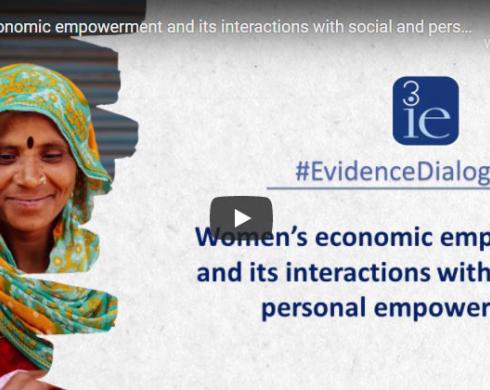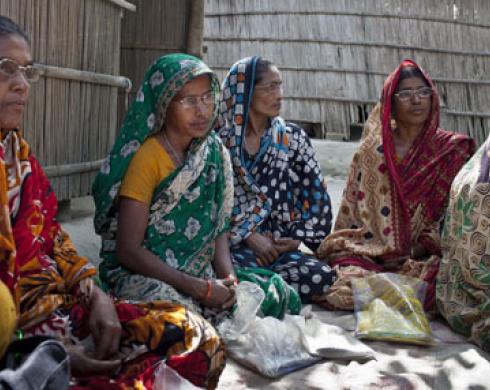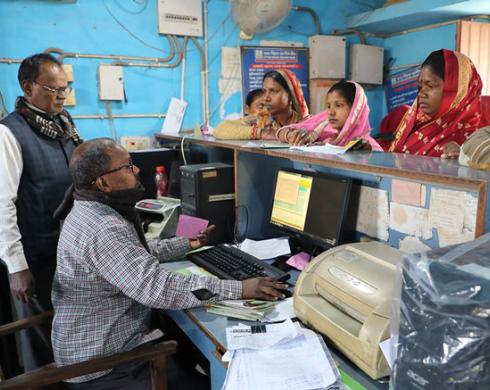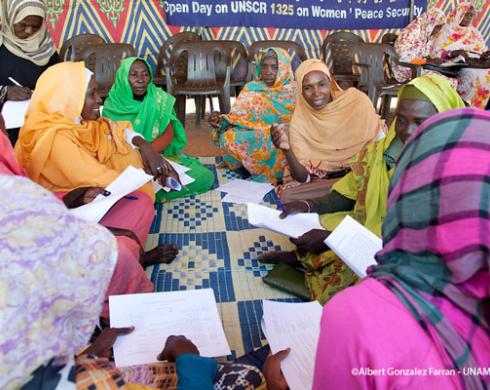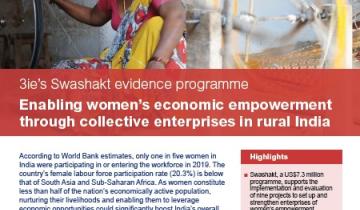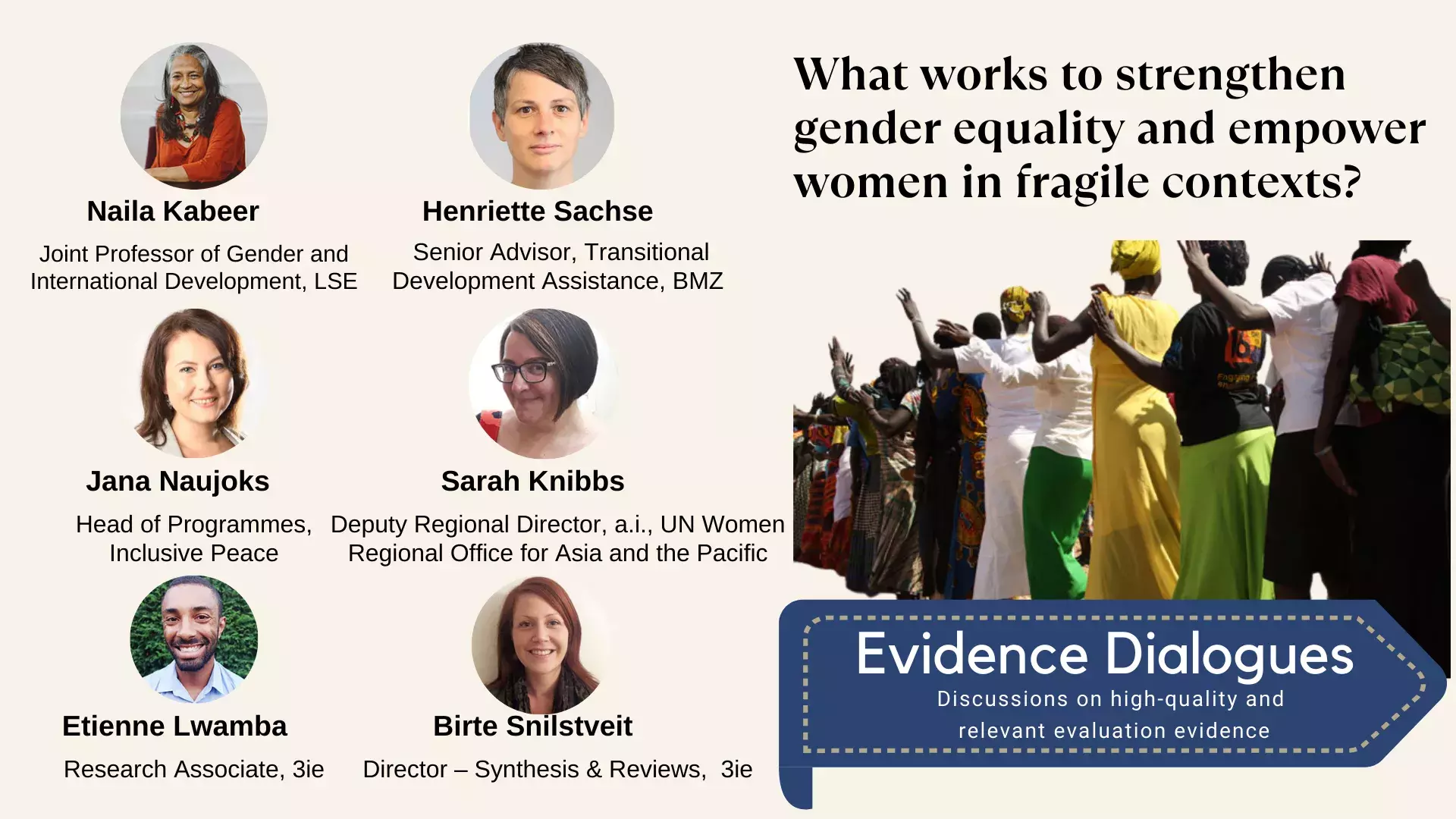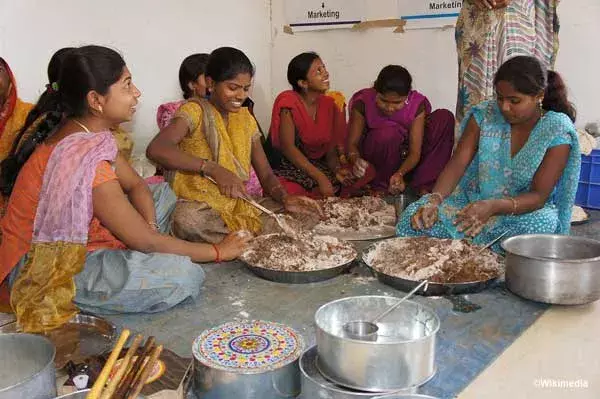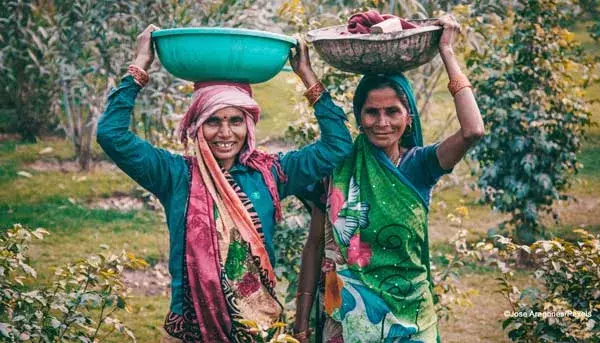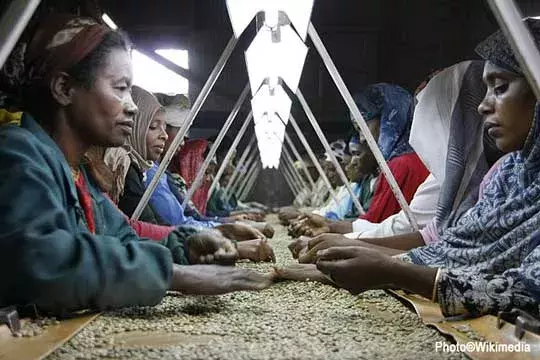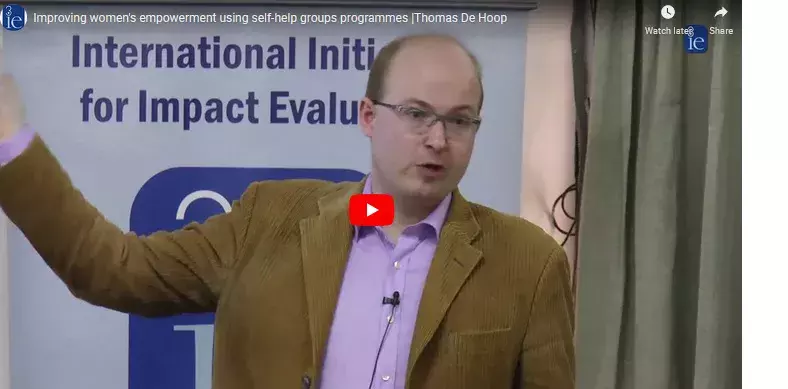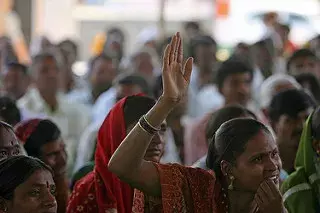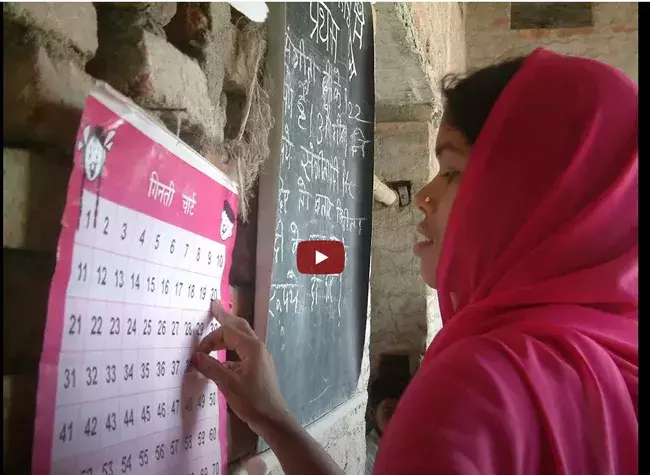Gender and Women’s Empowerment
Despite progress over the last decades, international data to track the SDG 5 on gender equality still show stark gaps between men and women in all spheres. To move towards sustainable development and greater parity among genders – in resources, opportunities, agency and achievements – governments and decision-makers need to know what works, how and at what cost.
3ie projects and programs are uncovering ways to promote gender equality and women’s empowerment. Our cross-cutting work seeks to inform what makes development interventions gender-sensitive and transformative in low- and middle-income countries, including challenging fragile contexts.

Overview
At 3ie, we believe that gender equality underpins just, peaceful and sustainable development. This has reflected in our commitment towards studying what works to promote gender equality and women’s empowerment in diverse contexts, as well as our cross sectoral evaluations and reviews that pay attention to gender and other contextual drivers of inequality. As a global leader in supporting the production, synthesis and uptake of impact evaluation evidence in international development, we have used our repositories and Development Evidence Portal to highlight that we need to do better in understanding gendered impacts of policies and programs. This need is particularly urgent with the COVID-19 pandemic worsening gender gaps.
According to the most recent data from the studies listed on the Portal, more than half the listed impact evaluations and systematic reviews did not address gender or equity and only 11.5% of the impact evaluations and 6.5% systematic reviews carried out sub-group analysis by sex (provide gender disaggregated data). We seek to build back better and support development actors in promoting gender and women’s empowerment by putting the spotlight on knowledge gaps and amplifying evidence-informed solutions.
Projects
Swashakt: Empowering Indian Women’s Collectives
India has one of the lowest female labor force participation rates in South Asia. Among rural women, less than 30 per cent are engaged in productive work, paid or unpaid. The government of India has several programs to enhance women’s livelihoods and their economic and social empowerment, several of which emphasize women’s collectives. 3ie’s Swashakt Evidence Program is supporting interventions to identify what works to enhance viability, scalability and returns of women’s collective enterprises and promote women’s economic empowerment.
Read the program overview brief | View the program theory of change | Women's empowerment framework | Working paper
Aquaculture, for livelihoods, nutrition and women’s empowerment
3ie is conducting a mixed methods evaluation and systematic reviews to generate evidence around interventions working with smallholder fish farmers, particularly women, to increase productivity and diversity of their aquaculture activities and promote maternal and child nutrition and women’s empowerment. Explore the findings of our first systematic review in this brief and this blog. You can read more about our program and its learning agenda in this blog.
Rural India Livelihoods Project
Launched in 2011, the National Rural Livelihoods Mission (NRLM) aims to link the rural poor in India to sustainable livelihood opportunities and financial services. In the first phase of collaboration with the rural development ministry, the Bill & Melinda Gates Foundation and the World Bank, 3ie conducted a large-scale evaluation across nine states where the National Rural Livelihoods Project (NRLP) was implemented. The evaluation report underscores NRLP’s impacts on a range of household and individual-level economic, social and empowerment outcomes. Its authors also assess the quality of institutions created by the program. The report is listed on the Indian government’s NRLM website as one of the key documents of the National Rural Livelihoods Promotion Society (NRLPS) and can be accessed here.
As part of the second phase, we are studying the impact of program interventions on household income, consumption, and measures of women’s empowerment. The endline evaluation of one of India’s largest poverty alleviation programs will use the baseline data from 3ie’s 2018-19 evaluation of the same. We are identifying a set of intensive blocks in which new income and livelihood-enhancing activities have been undertaken since 2018 and a parallel set of non-intensive blocks. The evaluation will be based on a follow-up survey of households in these blocks.
View impact evaluation brief (English | Hindi) | View briefing note on institution building, women’s empowerment and convergence
View IndiaSpend’s article on the evaluation.
Strengthening women’s empowerment and gender equality in fragile contexts
To help identify what approaches can improve women’s status in these settings, this systematic review synthesizes the evidence on the effects of 14 different types of gender-sensitive and gender-transformative interventions. This systematic review, our largest to date, includes 104 unique studies covering 55 identified program and 32 linked impact evaluations papers, in addition to 90 linked qualitative and process evaluations. All these studies took place in 29 countries identified as being particularly fragile and having a high level of gender inequality.
The review shows that many types of interventions had positive impacts on women, especially in terms of primary outcomes like women’s income, asset ownership, or representation in political processes. However, these gains often did not lead to positive effects on secondary outcomes related to women’s empowerment or intimate partner violence. Download a presentation on the systematic review here.
Read blog: What works to empower women in fragile settings?
Read blog: Why we need qualitative evidence in systematic reviews: the case of the Gender SR
Empowering adolescents: a collaborative research partnership
3ie is working to set up a researcher-practitioner partnership to bring together diverse voices working on adolescent empowerment in India. This project is supported by Co-Impact, a global philanthropic collaborative, to inform the agenda and design of the planned researcher-practitioner platform focussd on adolescents and young adults in the country. Early-life interventions among adolescents, especially adolescent girls, are critical to ensure gender equality and women’s empowerment. This work aims to strengthen research in the two linked areas. Read more in this blog.
Other initiatives
Lessons on women’s political empowerment
USAID’s Center for Democracy, Human Rights, and Governance (DRG) commissioned 3ie and NORC at the University of Chicago to strengthen the evidence base in their work areas: rule of law, human rights, civil society, independent media, good governance and political competition. We produced six evidence gap maps on these areas of interest to the DRG center and found clusters of studies that focus on women’s political empowerment interventions. To help decision makers find and use relevant evidence in their women's political empowerment policy and programming, we analyzed the sub-set of studies from the DRG maps.
Women’s empowerment within the food systems
Within 3ie's 'living' Evidence Gap Map on Food Systems and Nutrition, we find 10 impact evaluations that focus on interventions to support women’s empowerment. Overall, these interventions had positive impacts on food security and food affordability and availability. Evidence from qualitative work suggests that women’s empowerment interventions best influenced nutritional outcomes when adopting gender-transformative approaches and addressing gender and social norms.
Our findings suggest policymakers should consider improving women’s social capital so they can better control and decide how to feed their families. Qualitative evidence suggests that multi-component interventions seem to be more sustainable than single-focus interventions, especially when they combine a livelihoods component (asset transfer or financial services) with behavioral change communication. Researchers need to address issues with inconsistent data and reporting, particularly relating to seasonal changes, social norms and time taken between rounds of data collection in order to implement high-quality evaluations. Future studies could further contribute to the evidence base of gender-transformative approaches by carefully considering contextual norms and avoiding stereotyping women into pre-decided roles which may perpetuate social norms.
Read brief
Evidence impact
3ie-supported research is informing policy and decision making to support gender equality and women’s empowerment. To read more, click on the evidence impact summaries below:
Advancing evidence-informed action to empower women Evidence from a 3ie-supported systematic review by Brody et al. informed the Gates Foundation’s women’s empowerment strategy, as well as guiding its investment in additional research on women’s groups.
Informing parliamentary discussions and improving the design of India’s livelihoods program Evaluation findings of 3ie‘s evaluation of India’s National Rural Livelihoods Program were cited in response to questions in the parliament by two ministers of rural development and used by the World Bank to inform the next phases of the government of India’s women’s self-help groups-based livelihoods program.
Building on evidence to shift gender attitudes among youth in India Following promising findings around its effectiveness in neighboring Haryana state, the Punjab government in India is adapting and expanding a school-based program to seed progressive gender attitudes and behaviors among adolescents.
